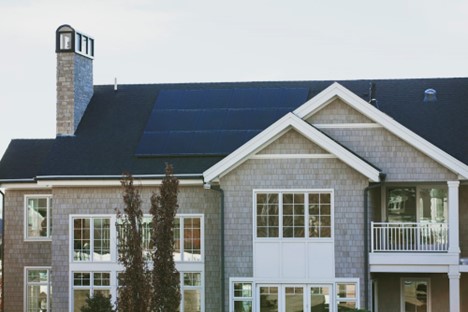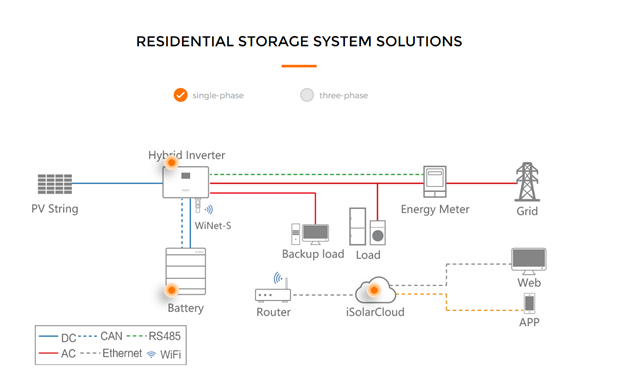As concerns about energy security and ecological sustainability expand worldwide, smart energy technologies have become more and more significant. By optimizing power generation, storage, and consumption, smart options help homes and businesses reduce their carbon footprint while limiting reliance on fossil fuels. Hybrid solar inverter solutions act as a pivotal part of the renewable energy infrastructure. They represent advanced technology that facilitates the integration of solar energy and conventional electricity within a single system.

Benefits of Hybrid Solar Inverters
Hybrid solar inverter systems combine multiple functionalities that maximize the benefits of renewable energy systems. Key benefits include:
1. Versatility: A hybrid inverter can simultaneously manage electricity from photovoltaic panels, solar batteries, and the utility grid. This means it can use solar power when available, grid power when needed, and stored battery power when electricity is scarce.
2. Energy self-sufficiency: By combining solar and battery storage, hybrid inverters enable users to achieve energy self-sufficiency, reducing reliance on the grid, especially during power outages or grid instability.
3. Cost-effectiveness: Users can not only use solar power for their own consumption but also store excess electricity in batteries or sell it to the grid when electricity prices are high, saving on electricity bills and potentially gaining economic benefits.
4. Increased system integration: Hybrid inverters reduce the number of components required by integrating multiple power conversion functions, thus lowering overall system costs and complexity.
5. High efficiency and performance: Hybrid inverters typically boast high power efficiency, low total harmonic distortion, fast transient response, and high control loop frequency, resulting in more stable and efficient system operation.
6. Future compatibility: With the development and cost reduction of energy storage technology, hybrid inverters offer a flexible solution for future energy systems, helping users adapt to changes in the future energy market.
7. Simplified design: The design of hybrid inverters simplifies solar systems by reducing the need for external components such as additional chargers or independent inverters, thereby reducing installation and maintenance complexity.
Assessing Your Renewable Energy System
Before selecting a hybrid solar inverter, it’s important to evaluate your existing renewable energy assets and needs. Here’s what it entails:
1. Evaluation of Your Current Renewable Energy Setup
A load assessment identifies peak energy demands and inefficiencies that need to be addressed. By analyzing historical usage data, load assessments reveal high-consumption appliances and times of day better to understand the self-consumption potential and remaining grid dependency.
2. Identifying Areas for Improvement and Optimization
A site audit examines panel positioning and shading to ensure maximum solar exposure year-round. A thorough inspection of the solar array checks for underperforming panels, shading from nearby structures, and opportunities to expand capacity through additional installations.
3. Determining Compatibility with Hybrid Solar Inverters
Verifying voltage and power ratings ensures correct hybrid solar inverter sizing. Inverter specifications must be matched to the DC voltage and maximum power point tracking requirements of the installed solar modules, as well as the type and capacity of the battery bank.

Details About the Integration of ESS Solution
Integrating a hybrid solar inverter into your renewable system requires careful planning, installation, and configuration to ensure optimal operation. Key steps involved include:
1. Sizing and Selecting the Right Hybrid Solar Inverter for Your System
A thorough audit of your home’s electrical loads, solar panel capacities, and battery bank specifications is necessary. Proper component sizing software can help determine the suitable inverter size to match your existing system.
2. Installation Requirements and Considerations
Confirming the selected hybrid solar inverter is electrically compatible with your solar panels, battery storage, and home electrical system is critical. Identify protective indoor or outdoor mounting locations that are able to support the weight and dimensions of the unit. Review networking capabilities to ensure remote monitoring or firmware updates are possible.
3. Connecting the Hybrid Solar Inverter to Existing Solar Panels and Battery Storage
When connecting your hybrid inverter to existing PV panels and battery, start by isolating all DC power at the breakers. Refer to manuals to identify positive and negative terminals for solar and battery DC connections. Solar cables are first attached to their terminals, ensuring proper polarity orientation. Secure connections firmly. Then, connect the battery cables in the same way.
4. Configuration and Setup for Optimal Performance
Through the control panel or companion app, initialize operating modes, frequency/voltage controls, and energy flow priorities suited for your system. Program safe shutdown triggers to protect components in emergencies. Pair monitoring apps to track performance from anywhere.
Sungrow’s Hybrid Solar Inverters Are Ideal for Your Renewable System
Sungrow is recognized worldwide as the most bankable inverter brand, with a breadth of experience spanning over 25 years. With over 150 countries powered by Sungrow, its global presence and leadership in PV and storage technologies are unparalleled. Committed to innovation, the company maintains the largest dedicated R&D team of any inverter manufacturer. Its top inverter models, like the SH5.0/6.0RS, SH8.0/10RS, and SH5K-30, integrate seamlessly with distributed energy systems. These inverters stand out with features like:
ü Maximized solar feed-in through integrated MPPT and optimized battery charging
ü Grid-tie or off-grid capability with zero downtime transfer during outages
ü Wide operating voltage range and integrated galvanic isolation for ultimate flexibility
ü Remote monitoring and firmware upgrades, and more

Conclusion
Overall, hybrid solar inverters are an essential smart energy technology that unlocks greater self-sufficiency and savings from renewable systems. By streamlining the integration of solar, storage, and backup power, these inverters optimize energy flows for minimum costs and maximum clean energy utilization.
Sungrow offers high-quality hybrid inverter solutions that are compatible with most system types. Visit our website for more information about intelligent solar energy solutions.